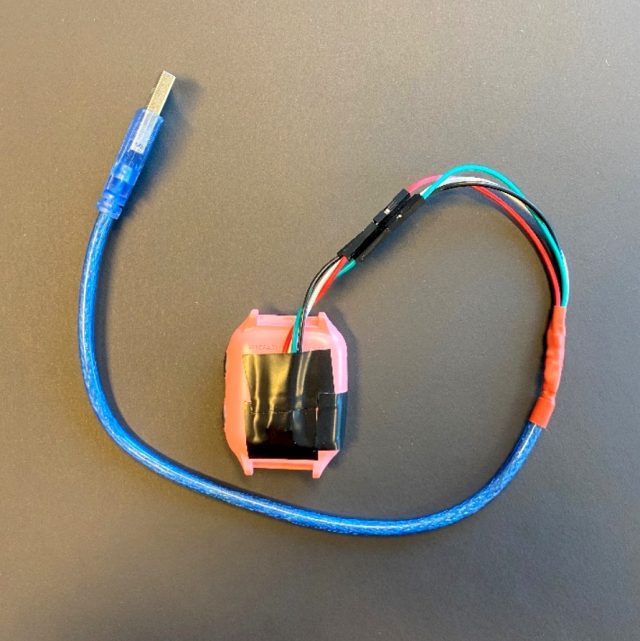
A popular smartwatch designed exclusively for children contains an undocumented backdoor that makes it possible for someone to remotely capture camera snapshots, wiretap voice calls, and track locations in real time, a researcher said.
The X4 smartwatch is marketed by Xplora, a Norway-based seller of children’s watches. The device, which sells for about $200, runs on Android and offers a range of capabilities, including the ability to make and receive voice calls to parent-approved numbers and to send an SOS broadcast that alerts emergency contacts to the location of the watch. A separate app that runs on the smartphones of parents allows them to control how the watches are used and receive warnings when a child has strayed beyond a present geographic boundary.
But that’s not all
It turns out that the X4 contains something else: a backdoor that went undiscovered until some impressive digital sleuthing. The backdoor is activated by sending an encrypted text message. Harrison Sand and Erlend Leiknes, researchers at Norwegian security company Mnemonic, said that commands exist for surreptitiously reporting the watch’s real-time location, taking a snapshot and sending it to an Xplora server, and making a phone call that transmits all sounds within earshot.
Sand and Leiknes also found that 19 of the apps that come pre-installed on the watch are developed by Qihoo 360, a security company and app maker located in China. A Qihoo 360 subsidiary, 360 Kids Guard, also jointly designed the X4 with Xplora and manufactures the watch hardware.
“I wouldn't want that kind of functionality in a device produced by a company like that,” Sand said, referring to the backdoor and Qihoo 360.
In June, Qihoo 360 was placed on a US Commerce Department sanctions list. The rationale: ties to the Chinese government made the company likely to engage in “activities contrary to the national security or foreign policy interests of the United States.” Qihoo 360 declined to comment for this post.
Patch on the way
The existence of an undocumented backdoor in a watch from a country with known record for espionage hacks is concerning. At the same time, this particular backdoor has limited applicability. To make use of the functions, someone would need to know both the phone number assigned to the watch (it has a slot for a SIM card from a mobile phone carrier) and the unique encryption key hardwired into each device.
In a statement, Xplora said obtaining both the key and phone number for a given watch would be difficult. The company also said that even if the backdoor was activated, obtaining any collected data would be hard, too. The statement read:
We want to thank you for bringing a potential risk to our attention. Mnemonic is not providing any information beyond that they sent you the report. We take any potential security flaw extremely seriously.
It is important to note that the scenario the researchers created requires physical access to the X4 watch and specialized tools to secure the watch’s encryption key. It also requires the watch’s private phone number. The phone number for every Xplora watch is determined when it is activated by the parents with a carrier, so no one involved in the manufacturing process would have access to it to duplicate the scenario the researchers created.
As the researchers made clear, even if someone with physical access to the watch and the skill to send an encrypted SMS activates this potential flaw, the snapshot photo is only uploaded to Xplora’s server in Germany and is not accessible to third parties. The server is located in a highly-secure Amazon Web Services environment.
Only two Xplora employees have access to the secure database where customer information is stored and all access to that database is tracked and logged.
This issue the testers identified was based on a remote snapshot feature included in initial internal prototype watches for a potential feature that could be activated by parents after a child pushes an SOS emergency button. We removed the functionality for all commercial models due to privacy concerns. The researcher found some of the code was not completely eliminated from the firmware.
Since being alerted, we have developed a patch for the Xplora 4, which is not available for sale in the US, to address the issue and will push it out prior to 8:00 a.m. CET on October 9. We conducted an extensive audit since we were notified and have found no evidence of the security flaw being used outside of the Mnemonic testing.
The spokesman said the company has sold about 100,000 X4 smartwatches to date. The company is in the process of rolling out the X5. It’s not yet clear if it contains similar backdoor functionality.
Heroic measures
Sand and Leiknes discovered the backdoor through some impressive reverse engineering. He started with a modified USB cable that he soldered onto pins exposed on the back of the watch. Using an interface for updating the device firmware, he was able to download the existing firmware off the watch. This allowed him to inspect the insides of the watch, including the apps and other various code packages that were installed.

One package that stood out was titled “Persistent Connection Service.” It starts as soon as the device is turned on and iterates through all the installed applications. As it queries each application, it builds a list of intents—or messaging frameworks—it can call to communicate with each app.
The researchers' suspicions were further aroused when they found intents with the following names:
- WIRETAP_INCOMING
- WIRETAP_BY_CALL_BACK
- COMMAND_LOG_UPLOAD
- REMOTE_SNAPSHOT
- SEND_SMS_LOCATION
After more poking around, the researchers figured out the intents were activated using SMS text messages that were encrypted with the hardwired key. System logs showed him that the key was stored on a flash chip, so he dumped the contents and obtained it—“#hml;Fy/sQ9z5MDI=$” (quotation marks not included). Reverse engineering also allowed the researcher to figure out the syntax required to activate the remote snapshot function.
“Sending the SMS triggered a picture to be taken on the watch, and it was immediately uploaded to Xplora’s server,” Sand wrote. “There was zero indication on the watch that a photo was taken. The screen remained off the entire time.”
Sand said he didn’t activate the functions for wiretapping or reporting locations, but with additional time, he said, he’s confident he could have.
As both the researchers and Xplora note, exploiting this backdoor would be difficult, since it requires knowledge of both the unique factory-set encryption key and the phone number assigned to the watch. For that reason, there’s no reason for people who own a vulnerable device to panic.
Still, it’s not beyond the realm of possibility that the key could be obtained by someone with ties to the manufacturer. And while phone numbers aren’t usually published, they’re not exactly private, either.
The backdoor underscores the kinds of risks posed by the increasing number of everyday devices that run on firmware that can’t be independently inspected without the kinds of heroic measures employed by Mnemonic. While the chances of this particular backdoor being used are low, people who own an X4 would do well to ensure their device installs the patch as soon as practical.
reader comments
120